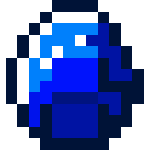Template:Centered pull quote
| “ | Lorem ipsum dolor sit amet, consectetur adipiscing elit, sed do eiusmod tempor incididunt ut labore et dolore magna aliqua. Ut enim ad minim veniam, quis nostrud exercitation ullamco laboris nisi ut aliquip ex ea commodo consequat. Duis aute irure dolor in reprehenderit in voluptate velit esse cillum dolore eu fugiat nulla pariatur. Excepteur sint occaecat cupidatat non proident, sunt in culpa qui officia deserunt mollit anim id est laborum. | ” |
Usage
{{Centered pull quote}} is a template meant for pull quotes, the visually distinctive text that is already present in the same article.
- NOTE: This template should not be used for quotations if they are not repeated elsewhere in the main text. The Manual of Style recommendation is:
- For visually distinctive quotation, use {{Quotation}} template.
- For long quotations, use the HTML <blockquote> element, such as through the use of the {{Quote}} or {{quote box}} template.
- Pull quotes work best when used with short sentences, and at the start or end of a section, as a hint of the section's content.
- For shorter pull quotes of 50 words or fewer in a similar style, consider using {{Rquote}} which sets the quote off to either the right or left as in a magazine sidebar. This can be effective on essay pages and WikiProject homepages.
Syntax
{{centered pull quote|quote text}}{{centered pull quote|quote text|author=author or speaker}}{{centered pull quote|quote text|author=author or speaker|source=title of article, speech, book, etc.}}
Parameters
- Parameter 1
- text of the quote; use
<br />between paragraphs. - Required
- Note: if the quote text contains one or more "=" (equal signs), then the template must be called as {{centered pull quote|1=quote text}} (see "Equals sign in parameter value")
- author
- Name of the person that wrote or spoke the text being quoted. Can include wiki syntax.
- source
- Source of the quote (publication title, speech, etc.). Can include wiki syntax.
- bgcolor
- The color of the background.
- wide
- When set to "yes", the quote expands to the entire width of the page. Useful for small quotes, but may clash with other floating objects, such as infoboxes.
Simple example
{{centered pull quote|quote text}}
| “ | To be, or not to be. | ” |
Sourced example
{{
centered pull quote|Life is like riding a bicycle. To keep your balance you must keep moving.
|author=[[Albert Einstein]]
|source=in a letter to his son<ref>[[Walter Isaacson]], ''Einstein: His Life and Universe'' (2007), p. 367.</ref>
}}
| “ | Life is like riding a bicycle. To keep your balance you must keep moving. | ” |
—Albert Einstein, in a letter to his son<ref>Walter Isaacson, Einstein: His Life and Universe (2007), p. 367.</ref> | ||
<references group="" responsive="1"></references>
Other examples
{{centered pull quote|1=F=ma|author=[[Isaac Newton]]}}
(the 1= is necessary as quote text contains an equal sign)
| “ | F=ma | ” |
| — Isaac Newton | ||
{{centered pull quote|1=Thus:
:<math>E=mc^2</math>|author=[[Albert Einstein]]}}
(quote text contains an equal sign and math syntax)
| “ | Thus:
|
” |
See also
- Template:Bq—quote without border, page-wide; like (and compatible with parameters of) the older {{Quote}} but with more features; conversion from all others listed here is trivially easy (retaining key data, losing decoration, etc.)
- Template:Centered pull quote—pull quote between large quotation marks, page-wide; should rarely be used in articles and is not for block quotations, only pull quotes
- Template:Quote—quote without border, page-wide, smaller-sized attribution
- Template:Quotation—quote with border, page-wide
- Template:Quote box—quote with border, in a reduced floating box
- Template:Rquote—pull quote between large quotation marks, in a reduced floating area; also rarely appropriate in articles
- Template:Talkquote—for quoting other editors (or guidelines, etc.) on talk pages (in a block)
- Template:Tq—for quoting on talk pages, inline
- Category:Quotation templates
